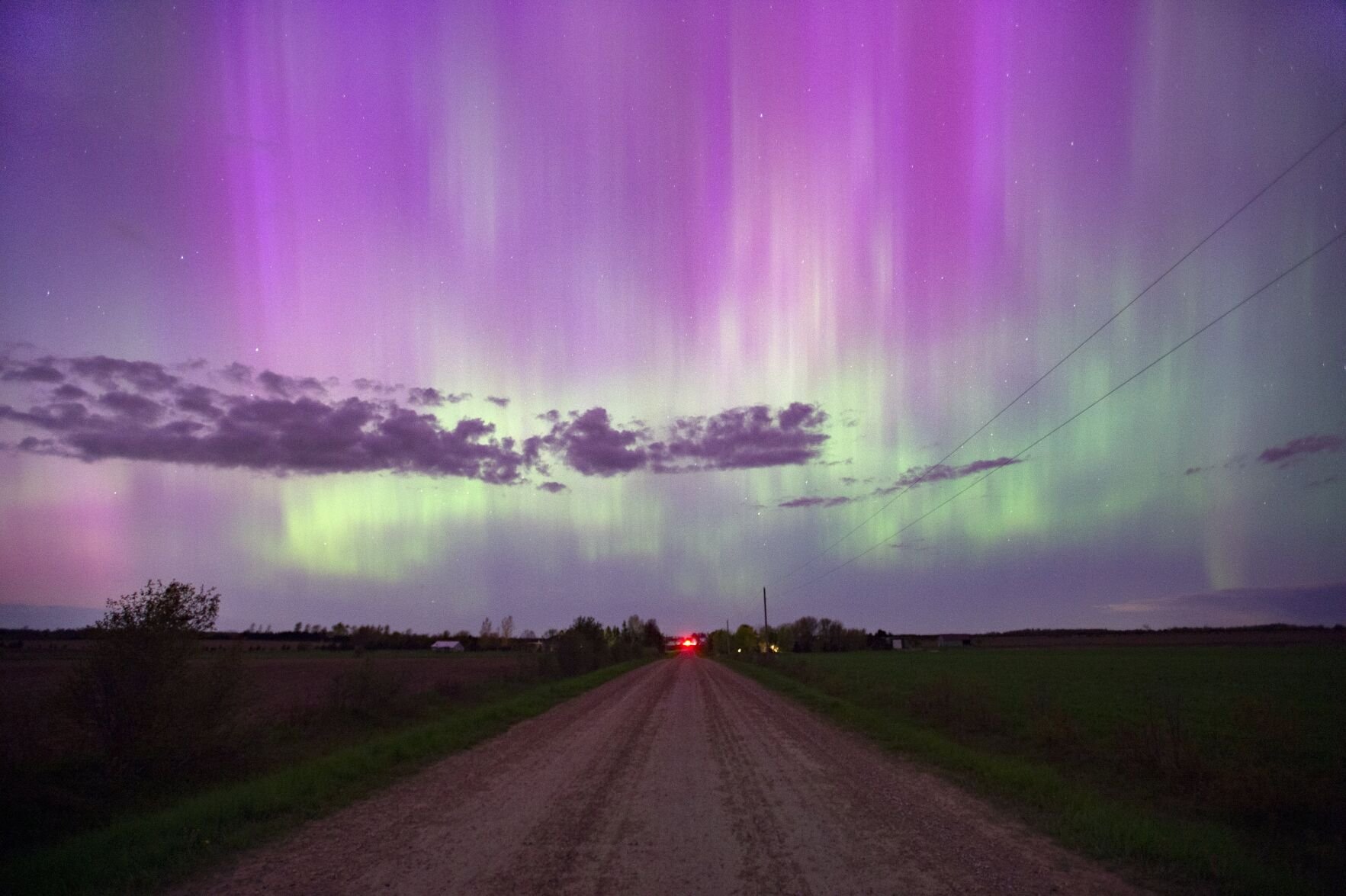The northern lights weren’t so north this weekend, as a major geomagnetic storm sent the aurora borealis sprawling across the night sky throughout the Northern Hemisphere.
NOAA’s Space Weather Prediction Center (SWPC) issued a severe geomagnetic storm watch, which hit Earth every night over the weekend, spreading the usually northern lights further south. And while parts of the country had cloudy weather that obscured the aurora borealis, some geographically lucky crowds were able to catch glimpses of the visual marvel.
Photographers, using a white light solar filter, were able to capture images of the busy solar activity that caused the northern lights to appear worldwide.

A photo of the sun using a white light solar filter, which captures the visible photosphere, shows the large area of sun spots and surface activity as seen from Oakland, Calif., Saturday, May 11, 2024.Â
(Carlos Avila Gonzalez/San Francisco Chronicle via AP)Brilliant blue and pink hues painted the skies in Fredericton, New Brunswick.

The International Space Station, left, streaks past as the Aurora Borealis or the Northern Lights are seen in Fredericton, Saturday, May. 11, 2024.Â
Hina Alam THE CANADIAN PRESSAcross the coast, in Vancouver, green streaks of colour floated in the sky, capturing the eyes of crowds.

A person takes a photo of Aurora Borealis or the Northern Lights in Vancouver, B.C., Saturday, May. 11, 2024.Â
ETHAN CAIRNS THE CANADIAN PRESSFurther south, our American neighbours had even better views. But the nice views also don’t come without some problems. The intense geomagnetic storms can interrupt high-frequency radio communications — though most critical infrastructure have backup plans in place.

The northern lights flare in the sky over a farmhouse, late Friday, May 10, 2024, in Brunswick, Maine.
Robert F. Bukaty APThe aurora borealis was spotted as far south as Utah, lighting up the sky above the Bonneville Salt Flats.

A geomagnetic storm lights up the night sky above the Bonneville Salt Flats on May 10, 2024 in Wendover, Utah.
Blake Benard Getty ImagesGeomagnetic storms are major disturbances in Earth’s magnetic field caused as energy from the sun is transferred to the space environment around Earth, . The largest storms are caused by coronal mass ejections — when billions of tons of plasma and their attached magnetic fields are launched out from the sun.
Internationally, the aurora borealis hit Europe as well in parts of the continent that rarely get the cosmic phenomenon.

People visit St Mary’s lighthouse in Whitley Bay to see the aurora borealis, commonly known as the northern lights, on May 10, 2024 in Whitley Bay, England.
Ian Forsyth Getty Images
The Northern Lights, or Aurora Borealis, illuminate the night sky over the mountains in Le Col des Mosses pass, Ormont-Dessous, Switzerland, during the early hours of Saturday, May 11, 2024.
Jean-Christophe Bott AP
A general view of the Commando Memorial as the aurora borealis, commonly known as the northern lights, are visible in the early hours on May 12, 2024 in Spean Bridge, Scotland.
Jeff J Mitchell Getty Images





















To join the conversation set a first and last name in your user profile.
Sign in or register for free to join the Conversation